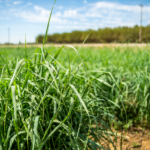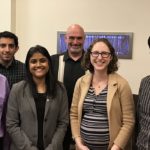 Imidazolium ionic liquid (IIL) solvents are one of the best sources for extracting sugars from plants. But the sugars from IIL-treated biomass are inevitably contaminated with residual IILs that inhibit growth in bacteria and yeast, blocking biochemical production by these organisms.
Imidazolium ionic liquid (IIL) solvents are one of the best sources for extracting sugars from plants. But the sugars from IIL-treated biomass are inevitably contaminated with residual IILs that inhibit growth in bacteria and yeast, blocking biochemical production by these organisms.
Lawrence Livermore National Laboratory (LLNL) scientists and collaborators at the Joint BioEnergy Institute (JBEI) have identified a molecular mechanism in bacteria that can be manipulated to promote IIL tolerance, and therefore overcome a key gap in biofuel and biochemical production processes. The research appears in the Journal of Bacteriology.
Read more in the JBEI website.








